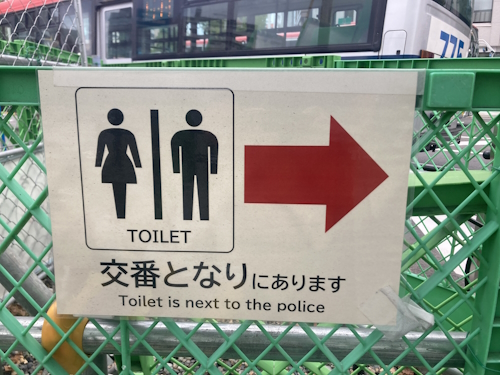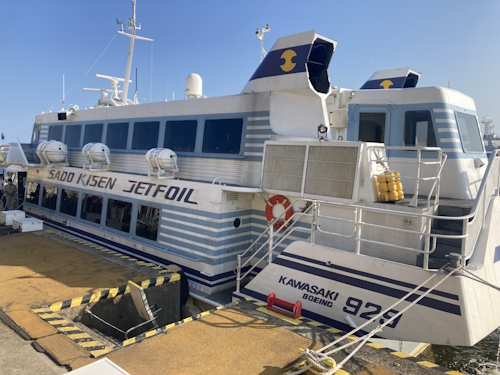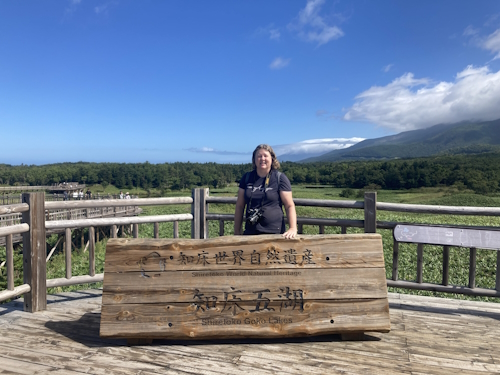Blog Countries
Top Tips for Japan
With a four-week trip to seven of the most recent or most remote Japanese WHS, I have ‘completed’ the country, the second person on this website to do so after Zoë. It was a wonderful trip, my fourth to Japan, and I am certainly not done with it—there are still more areas to explore. I would like to go to Shikoku Island or Hokkaido in the winter, for example.
Below are my Top Tips for Travel to Japan as a WH Traveller in 2024.
1. Being in Japan is better than seeing all its WHS
Just being in Japan and taking part in its daily life trumped the quality of its sights on each of my four visits. Think of a world where people are raised to be considerate of each other. You can roam the streets of the big cities alone late at night, or leave your bag unattended when you pick up something from a counter or go to the toilet. One with the best public transport system in the world. And with an extremely rich food culture. It’s a "Land of Instructions" too, sometimes bordering on the silly (see top photo), but those make things easier when renting a car or visiting a restaurant where you are supposed to grill your own meal.
2. It's not for people who get seasick easily
I counted, and no less than 9 of Japan’s 26 WHS partially or fully cover one or more islands, not being one of the four main islands (Hokkaido, Honshu, Shikoku, and Kyushu). They can all be easily reached using ferries or sometimes domestic flights, except for Okinoshima Island which is barred to visitors overall. Most voyages stay relatively close to the shore, so the level of 'turbulence' is generally low. Only the 24-hour ferry to Ogasawara crosses the open ocean for a long time.
3. Trains aren’t always the best choice anymore
When I visited Japan for the first time in 2000, it was obvious that I should invest in a Japan Rail Pass. It was an easy and inexpensive way for foreigners to use most of Japan’s train network. However, the pass was hit by a 70% price increase last year. It may now only be useful to a first-time traveller to the country who wants to move around a lot on the main islands in a short time. Single train tickets are also expensive, Osaka to Hakata (2.5 hours/600km) will cost over 100 EUR. The train experience overall feels a bit dated (Japan isn’t great at digitizing its services in general), although the trains fortunately still run like clockwork! See also this Forum topic about which WHS are best accessible by train. Taking a domestic flight or renting a car are valuable alternatives nowadays. Japan has low-cost flyers as well which often are cheaper than long-distance trains. You need to bring a special International Drivers Licence (model 1949) to rent a car, but driving is easy.
4. You'll get a fair representation of the country
The WHS are nicely spread around the country and its outlying islands, and divided between cities and rural areas. From the main islands, only Shikoku is missing. Thematically, there could be room for modern Japanese architecture (I find the Corbusier site in Tokyo a joke). Like most countries, Japan overdoes it a bit on the subjects it values the most (industrialization in the broader sense) and its mines and industrial sites don’t do so well in our community ratings. The next ones in the nomination pipeline, Asuka-Fujiwara and Hikone-jo, are more classical Japanese sights.
5. They don’t do well on the plaques
World Heritage Sites certainly are a ‘thing’ in Japan, but especially this time I noticed that the UNESCO WH logo rarely is displayed at its sites. The natural WHS are signposted as “World Natural Heritage Sites”, but rarely with a reference to UNESCO or to why they were inscribed. Sometimes they even have their own logos with the text ‘World Natural Heritage Site’ incorporated. This violates of course of our WHS Visitor Commandment #4: “You shall have a proper UNESCO plaque” (and it is a requirement in the guidelines from UNESCO too). What they do often have is a 'selfie-point' to immortalize you at the site, with a display of the site name (see photo 3, me at Shiretoko). At Tomioka Silk Mill, they even have one where you can have the exact date of your visit displayed.
It must be said though that Japan does very well on the other commandments, many sites are free to enter (and when they charge a small fee, you’ll get a proper ticket), they supply a lot of brochures including maps, there are official websites and the opening hours and other basics are rarely in doubt. Translations into English are often given, but usually, they are more limited than the Japanese texts. Sometimes they work with QR codes but these may not be operational.
Finally, I was thinking about the top 3 Japanese WHS and came up with the two best cultural sites (Nikko and Kyoto) and the two best natural sites (Yakushima and Ogasawara). Non-WHS that I enjoyed across the four visits include Matsumoto Castle and the Kibi Plain. Which additional sites in Japan would you put forward?
Els - 29 September 2024
Comments
Lubos Lier 29 September 2024
Nikko was one of my favorites: magnificent royal structures in forested mountainous natural environment in region with special cuisine close to Tokyo.


